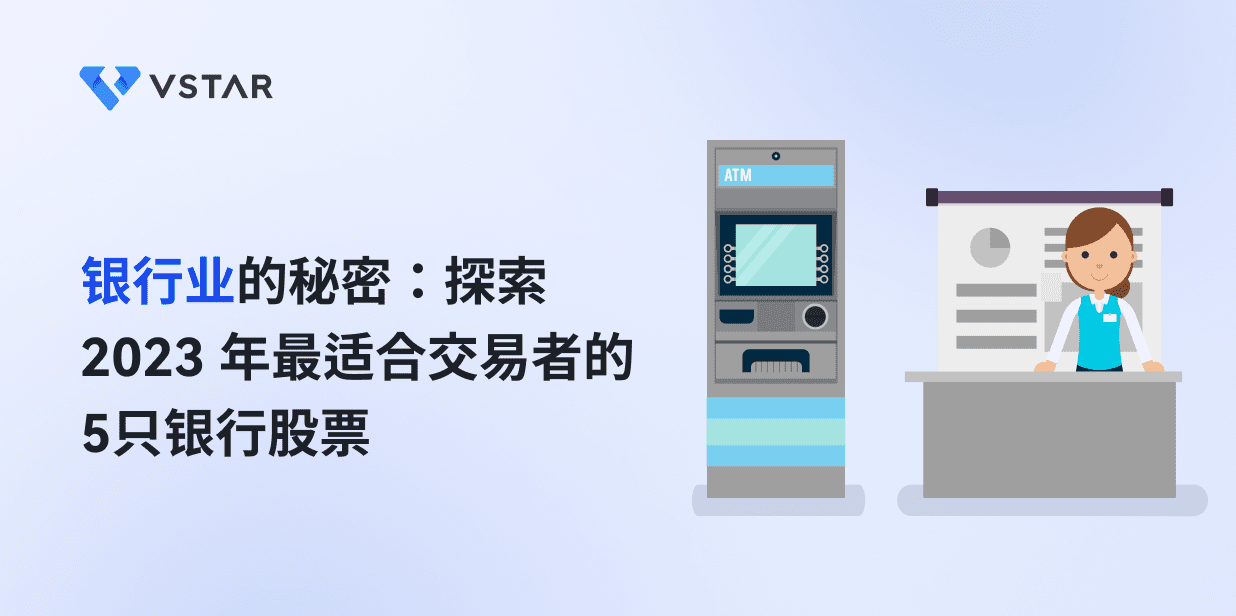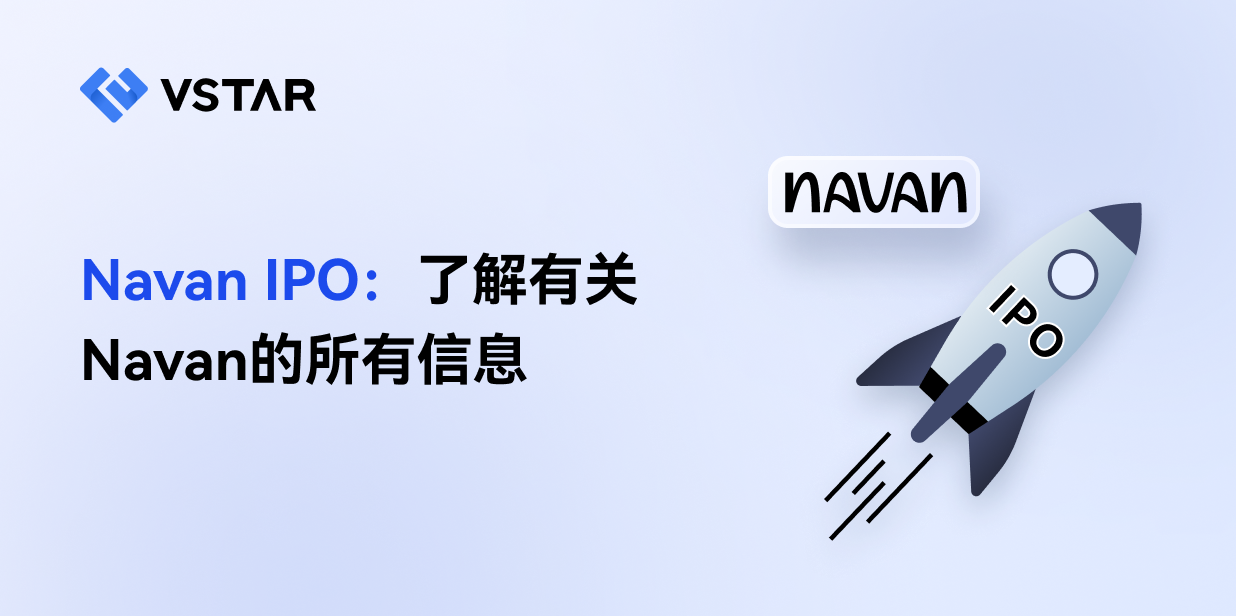2023年,银行业面临诸多挑战,从利率上升到震动一些地区性银行的银行业危机。然而,一些优质银行股在这种环境下成为赢家,带来了令人印象深刻的盈利增长和股东回报。投资银行股票可以带来很多好处,例如稳定的股息收入、资本增值以及免受通货膨胀和税收的影响。银行股还满足了永远不会消失的重要社会需求,并且具有相对简单的商业模式可供理解。
摩根大通公司(NYSE:JPM)——按资产和存款规模计算,美国最大的银行
摩根大通是一家高度多元化的金融服务公司,业务遍及 60 多个国家,资产总额近 4 万亿美元。它拥有强大的品牌和全球网络,为个人、企业、政府和机构提供广泛的产品和服务。去年,摩根大通股价上涨了 40%,从 105.93 美元上涨至 148.15 美元,跑赢标准普尔 500 指数和标准普尔 500 金融板块指数。
摩根大通的财务业绩和增长潜力
摩根大通公司(NYSE:JPM)公布了 2023 年第二季度的强劲业绩,净利润为 145 亿美元,较去年同期增长 67%。该公司还实现了 25% 的有形普通股回报率,远高于其资本成本。得益于较高的净利息收入、强劲的投资银行费用以及资产和财富管理业务的稳健增长,该公司的收入增长了 34%,达到 424 亿美元。该公司的业绩因收购第一共和银行的某些资产和负债而得到提振,该银行本季度净利润增加了 24 亿美元,收入增加了 27 亿美元。此次收购还扩大了该公司在富裕和高净值人群以及加州和纽约等关键市场的影响力。该公司期望通过整合第一共和国来实现显著的协同效应和交叉销售机会。
该公司在应对通胀、利率、财政政策和地缘政治相关的不确定性时,还展示了其在充满挑战的环境中的韧性和适应性。该公司保持着强劲的资产负债表,拥有1.4万亿美元的现金和有价证券,CET1资本比率为13.8%,补充杠杆率为5.8%。该公司本季度还通过股息和股票回购向股东分配了 47 亿美元。
摩根大通处于有利位置,可以充分利用美国经济持续复苏以及全球对其产品和服务不断增长的需求所带来的机遇。公司持续投资于创新、技术、人才和社会责任,努力为客户、社区和股东创造长期价值。
影响摩根大通股票的最新新闻和市场趋势
- 摩根大通面临国债拍卖操纵和贵金属市场欺骗的法律纠纷。
- 该银行于 2023 年 5 月 1 日从 FDIC 购买了第一共和银行的大部分资产和负债,以加强其财富战略并扩大其在加州的风险投资和技术客户。该交易还保证了第一共和银行客户的所有存款。
- 摩根大通还投资技术和创新,推出新产品和服务,例如 Chase Business Complete Banking、Chase First Banking 和 JPM Coin。
- 该银行正在扩大其在印度等新市场的业务,并在孟买和班加罗尔开设了办事处。
考虑摩根大通股票的交易者的风险和机遇
由于众多法律法规,摩根大通 (JPM) 面临着巨大的成本和合规负担,导致巨额罚款和法律问题和解。其国际业务面临政治不稳定、贸易争端和经济制裁等风险,影响特定地区的业绩。来自传统金融机构和非传统参与者的激烈竞争可能会扰乱该行业并侵蚀银行的市场份额。
交易摩根大通股票的一个优势是该银行在其各个业务部门维持了强大的风险管理框架。对增强风险文化、治理、政策和系统的投资增强了其风险控制能力。摩根大通通过全球财富与投资管理部门在财富管理行业占据领先地位,为高净值客户提供全面解决方案的机会。该银行致力于数字化转型,拥有超过 4000 万活跃数字用户,可改善客户体验、运营效率和创新。
美国银行(NYSE:BAC)——仅次于消费者存款的美国第二大银行
美国银行(BAC)是美国领先的消费银行,拥有美国银行中最大的存款基础和第二大贷款组合。凭借强大的数字银行平台和四个盈利部门,它为各个行业和地区的客户提供服务。 BAC 审慎的资本管理策略使其能够吸收潜在损失、支持增长计划并实现股东回报。去年,BAC 股票价值从 36.25 美元下跌约 14.7% 至 30.93 美元,而标准普尔 500 指数上涨 6%,标准普尔 500 金融板块指数上涨 1.5%。
主要财务指标和绩效指标
美国银行 (BAC) 公布了 2023 年第二季度的骄人业绩,净利润为 74 亿美元,即稀释后每股收益 0.88 美元,较去年同期增长 19%。该银行还实现了 15.5% 的有形普通股回报率,远高于其资本成本。在净利息收入增加、投资银行费用强劲以及资产和财富管理业务稳健增长的推动下,该银行的收入增长了 11%,达到 252 亿美元。
该银行的业绩得到了美国经济持续复苏及其多元化和全球业务模式的支撑。该银行的四个业务部门的客户活动强劲,市场份额也有所增长:消费者银行业务、全球财富与投资管理、全球银行业务和全球市场。该银行在应对通胀、利率、财政政策和地缘政治相关的不确定性时,还展示了其在充满挑战的环境中的韧性和适应性。该银行保持着强劲的资产负债表,拥有1.4万亿美元的现金和有价证券,CET1资本比率为11.6%,补充杠杆率为6.0%。该银行本季度还通过股息和股票回购向股东分配了 47 亿美元。
影响 BAC 股票的最新新闻和动态
- 美国银行最近宣布,将从 2023 年第三季度开始,将季度股息提高 17%,至每股 0.21 美元。该银行还宣布,将在未来四个季度回购高达 250 亿美元的普通股。须遵守市场条件和监管部门的批准。
- 该银行还宣布,将在未来五年内投资5 亿美元,以促进美国的种族平等和经济机会。该银行将重点关注四个领域:健康、再就业培训、小企业和经济适用房。
- 美国银行在各个市场都面临着一些法律挑战,例如美国司法部就其在金融危机期间销售抵押贷款支持证券中所扮演的角色提起的诉讼,客户就其透支费用提起的集体诉讼,以及英国金融行为监管局对其反洗钱规则合规情况进行调查。
交易者的潜在风险和机遇
BAC 股票的表现取决于多种因素,例如经济、利率、竞争和监管。这些因素可能对其收入、收益、市场份额和盈利能力产生积极或消极的影响。风险因素之一是穆迪下调了 10 家小型地区性银行的信用评级,该公司还表示正在审查 BAC 等 6 家大型银行的评级。穆迪表示,美联储加息对银行业构成挑战,因为这可能会增加融资成本并减少银行的经济资本。
较低的信用评级可能会使 BAC 借款和发行债务变得更加复杂和昂贵。另一方面,BAC 的一个机会是其客户的401(k) 余额增加,该余额在2023 年增长了9.6%。这可能会促进BAC 的财富管理和退休服务,而这是该银行费用收入的重要来源。此外,BAC 还可以从其旨在增强客户体验和运营效率的数字化转型举措中受益。
富国银行(NYSE:WFC)——有竞争力的抵押贷款和处理业务服务银行
富国银行是美国著名的金融服务公司,拥有超过 1.9 万亿美元的资产和 7000 万客户。它为个人、企业和政府提供广泛的银行、投资、抵押贷款和消费金融产品。富国银行凭借在美国抵押贷款市场的领先地位和多元化的业务组合,为全球客户提供服务并保持稳固的资本状况。去年,WFC 股票价值从 45.75 美元下跌约 4.4% 至 43.74 美元,而标准普尔 500 指数和标准普尔 500 金融板块指数分别上涨 6% 和 1.5%。
富国银行的财务状况和盈利能力
2023 年7 月14 日星期五,富国银行报告其2023 年第二季度净利润为49 亿美元,即稀释后每股收益1.25 美元。在净利息收入和非利息收入增加的推动下,该公司的收入较2022 年第二季度增长20%,达到205 亿美元收入。公司资产回报率为1.05%,股本回报率为11.4%,平均有形普通股回报率为13.7%。该公司还在 2023 年第二季度回购了 40 亿美元的普通股,并预计将 2023 年第三季度的普通股股息提高至每股 0.35 美元,但须经董事会批准。
该公司的四个可报告运营部门的业绩强劲:消费者银行和贷款、商业银行、企业和投资银行以及财富和投资管理。该公司受益于更高的利率、更高的贷款余额、更稳健的资金管理业绩、股票和固定收益产品交易收入的增加以及附属风险投资和私募股权业务减值的降低。
影响 WFC 股票表现的近期事件
- 富国银行最近宣布,将从 2023 年第三季度开始,将季度股息提高 100%,至每股 0.20 美元。该银行还宣布,将在未来四个季度回购高达 180 亿美元的普通股。市场条件和监管部门的批准。
- 富国银行还宣布以 21 亿美元的价格将其资产管理业务出售给 GTCR LLC 和 Reverence Capital Partners LP。该交易计划于 2023 年下半年完成。该银行表示,此次出售将使其能够专注于核心银行业务并简化运营。
- 富国银行在各个市场都面临着一些法律挑战,例如美国司法部对其在金融危机期间销售抵押贷款支持证券中所扮演的角色提起的诉讼,客户对其未经授权开户丑闻提起的集体诉讼,以及货币监理署对其风险管理实践的调查。
交易者的潜在风险和机遇
富国银行(WFC)是美国最大、最有影响力的银行之一,但近年来面临着一些挑战和争议。该银行卷入了各种丑闻,例如未经授权开户、记录保存失败和滥用消费者行为。这些问题损害了其声誉,导致监管处罚,并侵蚀了其盈利能力。然而,该银行还采取措施改善其治理、文化和风险管理,并投资于其数字能力和客户体验。
对于 WFC 股票的交易者来说,风险和机遇并存。一方面,该银行面临着竞争和不确定环境以及持续的法律和监管审查带来的阻力。该银行还可能面临来自股东和积极分子的压力,他们要求管理层加强问责制和透明度。另一方面,该银行拥有强劲的资产负债表、多元化的业务组合和忠诚的客户群。该银行还受益于有利的利率前景、强劲的经济复苏和慷慨的资本回报政策。该银行最近宣布了一项 300 亿美元的股票回购计划,并将股息增加至每股 35 美分。这些行动反映了该银行对其前景的信心以及回报股东的承诺。
花旗集团(NYSE:C)——涉足高增长市场的全球领先银行
花旗集团是全球领先的金融服务公司,资产超过2.3万亿美元,拥有超过2亿的庞大客户群。它在 160 多个国家/地区开展业务,为个人、企业、政府和机构提供多样化的银行、投资和消费金融产品。花旗集团在新兴市场,尤其是亚洲和拉丁美洲拥有强大的影响力,在跨境支付、贸易融资和外汇领域表现出色。该公司保持均衡的业务组合和稳固的资本状况,并为股东带来回报。去年,C 股下跌约 18.4%,从 54.07 美元跌至 44.10 美元,表现逊于标准普尔 500 指数(上涨 6%)和标准普尔 500 金融板块指数(上涨 1.5%)。
花旗集团的财务业绩和增长前景
全球最大的银行机构之一花旗集团于2023 年7 月14 日公布了2023 年第二季度业绩。该公司公布净利润为29 亿美元,即稀释后每股收益1.33 美元,营收为194 亿美元。与去年同期相比,净利润下降了 36%,收入下降了 1%。业绩下降的主要原因是市场、投资银行和全球财富管理业务的下滑,以及退出市场和传统特许经营业务缩减的影响。该公司还面临着更高的费用、更高的信贷成本和更高的有效税率。
然而,花旗集团在充满挑战的环境中也显示出了韧性和增长潜力的迹象。该公司的服务业务(包括资金和贸易解决方案以及证券服务)带来了强劲的收入,这两个部门都增长了 15%。在信用卡余额和零售服务增加的推动下,该公司的美国个人银行业务的贷款也出现增长。此外,该公司保持稳健的资本状况,普通股一级资本率为13.3%,并以股息和回购的形式向普通股股东返还20亿美元。
花旗集团 2023 年第二季度业绩反映了宏观经济背景、竞争格局及其业务模式持续转型的综合影响。尽管该公司在某些领域面临一些阻力,但它也在其他领域展示了其实力和多样性。花旗集团未来的业绩将取决于其执行战略、适应不断变化的市场条件以及利用其全球网络和专业知识的能力。
影响 C 股价值的最新新闻和市场因素
- 花旗集团最近宣布,将从2023 年第三季度开始,将季度股息提高50%,至每股0.24 美元。该行还宣布,将在未来四个季度回购最多120 亿美元的普通股,但须遵守市场条件和监管部门的批准。
- 花旗集团还宣布将以25亿美元的价格将其在印度和中国的资产管理业务出售给贝莱德公司。该交易应于 2023 年下半年完成。该银行表示,此次出售将使其能够专注于核心银行业务并简化运营。
- 花旗集团在各个市场都面临着一些法律挑战,例如美国司法部就其在金融危机期间销售抵押贷款支持证券中所扮演的角色提起的诉讼、客户就其透支费用提起的集体诉讼以及一项调查欧盟委员会对其外汇交易行为的处罚。
交易者的风险和机遇
花旗集团 (Citigroup Inc.) 股票 2023 年的走势反映了经济的不确定性和混合的细分市场表现。风险因素包括花旗集团 2023 年第二季度净利润和每股收益较上年大幅下降。其市场、投资银行和财富管理部门的收入减少,加上运营费用和税收的增加,导致了这一下降。花旗集团正在进行的重大改革包括退出 13 个消费市场、剥离中国和印度的零售银行业务以及裁员 10%,旨在提高效率和盈利能力。然而,执行该计划会带来巨大的成本和执行风险。此外,该公司还面临监管和法律挑战,包括为解决风险管理效率低下问题而支付4 亿美元的和解金,以及欧盟委员会、英国金融行为监管局和香港金融管理局等其他监管机构因市场操纵而可能实施的处罚。
相反,在利率上升、存款成本下降和贷款组合扩张的推动下,花旗集团 2023 年第二季度的净利息收入同比增长 12%,带来了机遇。此外,该公司的资金和贸易解决方案收入在2023 年第二季度同比增长7%,为企业和机构客户提供现金管理、贸易融资、证券服务和商业卡,受益于覆盖160 个国家和覆盖90%的强大全球网络财富世界500 强之一。此外,花旗集团保持着强大的资本状况,截至2023 年6 月30 日,其普通股一级资本比率为11.7%。美联储于2023 年6 月批准促使该公司恢复股票回购计划,目标是2023 年第三季度价值 22 亿美元的股票。
US Bancorp(NYSE:USB)——专注于区域业务的美国第五大银行
US Bancorp是美国著名的金融服务公司,拥有超过7000亿美元的资产,为超过1800万客户提供服务。该公司主要在中西部和西海岸运营,提供全面的银行、投资、抵押贷款、信托和支付服务产品。 US Bancorp 通过 2,700 家分行和 4,400 台 ATM 机在 26 个州广泛开展业务,为不同的细分市场和行业提供服务。该公司保持多元化的业务组合和稳固的资本状况,并为股东带来回报。去年,USB 股票下跌约 21.1%,从 49.08 美元跌至 38.72 美元。
美国合众银行的财务健康与稳定
合众银行母公司合众银行公布了 2023 年第二季度强劲的财务业绩,反映出其多元化的业务模式、严格的费用管理和审慎的风险管理。该公司净利润为22亿美元,环比增长12.8%,同比增长23.6%。该公司还实现了平均资产回报率1.47%、平均普通股回报率15.9%、净息差3.12%、效率比率53.4%。这些指标展示了公司在充满挑战的经济环境中的盈利能力、效率和弹性。
在战略举措、客户忠诚度和市场扩张的推动下,美国合众银行在 2023 年第二季度也表现出了强劲的增长潜力。该公司完成了对三菱日联联合银行 (MUB) 的收购,资产负债表上增加了 1,320 亿美元资产、970 亿美元存款和 580 亿美元贷款。此次收购还增强了该公司在西海岸和其他有吸引力的市场的影响力和能力。该公司还继续投资于数字化转型、支付服务、财富管理和商业产品,在各个领域产生了更高的非利息收入。此外,该公司保持了强劲的资本状况,巴塞尔协议 III 标准化 CET1 比率为 10.2%,远高于监管最低值 4.5%。该公司还于 2023 年第二季度通过股息和股票回购向股东返还 14 亿美元。
影响 USB 股票价格的近期事件
- 美国合众银行最近宣布,将从 2023 年第三季度开始,将季度股息提高 10%,至每股 0.46 美元。该银行还宣布,将在未来四个季度回购最多 80 亿美元的普通股。市场条件和监管部门的批准。
- US Bancorp还宣布将以80亿美元收购MUFG Union Bank在西海岸的消费银行业务。该交易应于 2023 年第四季度完成。该银行表示,此次收购将增强其在有吸引力的市场中的规模和能力,并为其股东创造巨大价值。
- 美国合众银行在各个市场都面临着一些法律挑战,例如美国司法部就其在金融危机期间销售抵押贷款支持证券中所扮演的角色提起的诉讼、客户就其透支费用提起的集体诉讼以及美联储对其反洗钱规定的遵守情况进行调查。
交易者的潜在风险和机遇
由于多种因素,美国合众银行(NYSE:USB)的股票最近承受压力。信用评级机构穆迪投资者服务公司 (Moody's Investors Service) 已将 USB 置于降级审查之下,理由是其存款成本上升以及批发融资的使用增加。该银行还面临2023年3月硅谷银行倒闭的挑战,该银行倒闭引发了存款取款潮并加剧了区域银行之间的竞争。 USB 的净息差(衡量盈利能力的关键指标)在 2023 年第一季度已转为负值,因为该银行必须支付更多费用才能留住客户。
然而,USB 也有一些改进其性能和前景的机会。该银行在中西部和西部地区拥有强大的特许经营权,受益于忠实的客户群和多元化的收入来源。该银行还投资于数字化转型和创新,这可以帮助其吸引新客户并降低运营成本。此外,USB 拥有稳健的资本状况和保守的风险状况,这有助于其应对不确定的经济环境和潜在的信贷损失。 USB 4.2%的股息收益率对于追求收入的投资者也很有吸引力。
前五名银行股的看涨因素
有几个因素可能会在不久的将来支持前五名银行股的看涨情况。其中一些因素是:
- 利率上升:美联储已表示将很快开始缩减债券购买计划,并可能最早在 2023 年加息,以应对通胀上升和经济增长。这可能会提高银行的净利息收入和利润率,使它们能够提高贷款利率并减少存款利率。
- 强劲的经济增长:根据国际货币基金组织的数据,在企业重新开放、疫苗接种和财政刺激的推动下,美国经济到 2023 年应增长 6%。这种增长可能会增加对贷款、存款、支付和财富管理等银行产品和服务的需求。它还可以提高信贷质量并降低银行的贷款损失拨备,因为藉款人更有可能偿还债务。
- 成本削减举措:银行一直在实施各种成本削减措施,例如关闭分支机构、减少员工人数、流程自动化和简化运营。这些举措可以帮助降低他们的开支并提高效率比率,该比率衡量他们利用资源创造收入的程度。
- 数字银行的增长:对在线和移动平台、云计算、人工智能和数据分析等数字银行的大量投资可以帮助银行增强客户体验、增加市场份额、实现收入来源多元化并降低运营风险。
- 不断增长的业务线:银行拥有一些业内增长最快、利润最高的业务线,例如资金和贸易解决方案、证券服务、财富管理、投资银行和支付服务。这些业务线可以提供稳定的经常性收入、高利润和交叉销售机会。
- 交易和投资业务复苏:随着 2023 年下半年市场波动、企业交易和融资回升,银行可能会从交易和投资银行活动的反弹中受益。交易和投资银行收入通常具有周期性,并取决于市场状况和客户需求。
- 信贷质量提高:过去一年,银行释放了在疫情期间预留的数十亿美元的贷款损失准备金,信贷质量显著改善。这反映出对经济复苏和借款人偿还贷款能力的乐观态度,可能会提高盈利和资本比率。
- 监管顺风:在不久的将来,银行可能会受益于一些监管顺风,例如放宽资本要求、放宽压力测试规则以及批准增加股息和股票回购。这些监管变化可以提高其财务灵活性和股东回报。
使用 VSTAR 交易银行股票差价合约
如果您对交易银行股票感兴趣但不想拥有实际股票,您可以使用 VSTAR 交易银行股票差价合约。 CFD 代表差价合约,它是一种衍生品,允许您在不占有基础资产的情况下推测其价格变动。
使用 VSTAR 交易银行股票差价合约有几个优点:
- 您可以使用高达 1:200 的杠杆进行交易,具体取决于工具。这意味着您可以用更少的资金参与更多的交易机会,并有可能放大您的回报。
- 您可以以更低的交易成本和零佣金进行交易。这意味着您可以保留更多利润并最大限度地减少损失。
- 您可以通过各种热门银行股票进入全球股票市场。这意味着您可以实现投资组合多元化并利用不同的市场趋势。
- 您可以以最优惠的市场价格以闪电般的速度执行交易。这意味着您可以快速、顺利地进入和退出交易,而不会出现延迟或滑点。
要开始使用 VSTAR 交易银行股票差价合约,您需要:
- 在线或通过其移动应用程序注册 VSTAR 账户
- 验证您的身份并将资金存入您的账户
- 从工具列表中选择您首选的银行股票差价合约
- 根据您的市场观点建立买入或卖出头寸
- 监控您的仓位,并在您想要获利或止损时平仓
结论
银行业是金融市场中最重要和最有影响力的部门之一。它为那些希望从老牌银行和年轻银行的创新、增长和成功中受益的交易者提供了许多投资机会。然而,交易银行股票也涉及各种风险,可能对其业绩产生正面或负面影响。因此,交易者在进入任何交易之前需要进行自己的研究、分析和风险管理。
如果您准备好使用 VSTAR 交易银行股票差价合约,请不要再等待。从今天开始投资银行股!
*免责声明:本文内容仅供学习,不代表VSTAR官方立场,也不能作为投资建议。




















